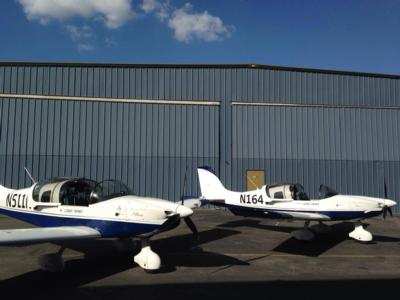Special Light Sport Aircraft Need Manufacturer Approval For The Installation Of ADS-B Out Equipment
Last week EAA reminded us that as the ADS-B mandate draws one year closer, EAA’s advocacy staff continues its work to ensure important segments of the general aviation community are not left behind. Here’s a little background information about why EAA is concerned about this and is helping to resolve certain issues.

Aircraft that are certificated as special light sport aircraft (S-LSA) must have a pathway established by the aircraft manufacturer for the installation of ADS-B because S-LSA’s are certificated by complying with industry standards for certification developed through the ASTM committee process. This means that owners of these aircraft must have the manufacturers develop, or approve, a system for the installation of equipment that was not part of the original certification.
An aircraft that holds a ‘standard’ airworthiness certificate can have this additional equipment installed through a certified maintenance process. For example, if you own a Cessna 172 and want to change-out the avionics for the purpose of ADS-B, it can be done through your local FAA approved avionics shop… Cessna doesn’t get involved.
However, that is not the case with an S-LSA because it holds a ‘special’ airworthiness certificate. The manufacturer must provide an approved pathway for the installation and issue a letter that allows the installation. It is the manufacturer’s responsibility to assure that the aircraft remains in compliance with the FAA accepted industry ASTM consensus standards when they approve the installation of alternative avionics.
While the S-LSA manufacturers must be involved in approving the addition or changing of equipment in their aircraft, and the ADS-B unit itself must comply with the performance requirements of the technical standard order for ADS-B Out, it does not have to be TSO approved by the FAA.
Here’s the bottom line; owners of S-LSA’s that want their airplanes to remain in that certification status need to work with the manufacturers to determine how they will comply with ADS-B requirements, or for the installation of other equipment such as an angle of attack indicator.
One of the issues EAA is dealing with is the fact that some S-LSA’s are no longer supported by manufacturers. EAA has made it clear that it is unacceptable for certain S-LSAs to be barred from flying in ADS-B rule airspace after January 1, 2020, because they currently have no legal path to equipage.
And here’s a reminder for those of you operating aircraft that hold a special experimental airworthiness certificate (experimental light sport and experimental amateur built, for example). These aircraft will still be required to meet the 2020 mandate if you intend to operate in airspace that requires ADS-B out, and they are must have an ADS-B unit meets the FAA standards, but they do not have to be TSO’ed or type certificated for your specific aircraft.
We at ANN will keep you tuned into progress being made in this area.
(Image of an S-LSA from file)
 NTSB Prelim: Hy-Tek Hurricane HP
NTSB Prelim: Hy-Tek Hurricane HP ANN's Daily Aero-Term (05.14.25): Flight Check
ANN's Daily Aero-Term (05.14.25): Flight Check Aero-News: Quote of the Day (05.14.25)
Aero-News: Quote of the Day (05.14.25) ANN's Daily Aero-Term (05.15.25): Primary Radar
ANN's Daily Aero-Term (05.15.25): Primary Radar Airborne 05.12.25: $1M Flying Car, Marion Airport Saved, AirVenture Cup
Airborne 05.12.25: $1M Flying Car, Marion Airport Saved, AirVenture Cup



